PULIDONIS Walther, 1972 (engl./ fr.)
Series Urbiniae
Type : Pulido s.n. (CAS 414555), collected at Beristain, Puebla, 30 km from Necaxa on lateral road leading to Zacatlán.
Etymology : Named for its collector.
Distribution : Puebla, Veracruz, according to C.H. Uhl also in Hidalgo.
Description by E. Walther in Echeveria, 122-124, 1972 :
Plants glabrous.
Rosettes stemless, solitary at least when young, 8 cm or more in diameter.
Leaves numerous, to 25 or more, spreading to ascending, narrowly obovate-oblong to oblong-oblanceolate, long-attenuate to base, turgid, nearly flat above, beneath convex and obscurely keeled, at apex minutely mucronate, to 5 cm long and 15 mm broad, bice-green, with edges and mucro morocco-red, not puberulent or glaucous.
Inflorescences ascending-spreading to decumbent, to 18 cm tall, peduncle slender, 3 mm thick near base, dark olive-buff, with about six appressed, linear-lanceolate, acute olivine bracts to 15mm long, racemes simple, secund, strongly nodding in bud, with 10 or more flowers, pedicels to 6 mm long, slender but decidedly turbinate below calyx.
Flowers : Sepals unequal, longest to 6 mm long, spreading, deltoid or ovate-deltoid, acute, corolla bluntly pentagonal, strongly urceolate, conical in bud, to 10 mm long, 8 mm in diameter near base, 8 mm at mouth, lemon-yellow, both inside andout, petals gibbose at base, the apex strongly out- and recurved, bluntly mucronate, scarcely hollowed within at base, carpels 6 mm long, nectaries to 2.5 mm wide, thin, strongly oblique, both chalcedony-yellow below, primrose-yellow above.
Flowers from April on.
Cytology : n = 32, 62, 64.
Link to a summary of the above description in English and French.
Note :
Offered as ISI 421 in 1963, even before name and description had been published, with the wrong information that Victor Reiter had received it from Eric Walther - it was the other way round : Sr. Pulido sent a plant to Victor Reiter to cultivate it, and Walther in due time described a plant he had got from V. Reiter. And the plant had not been collected at Necaxa, it had been found at Beristain, 30 km from Necaxa on road to Zacatlán.
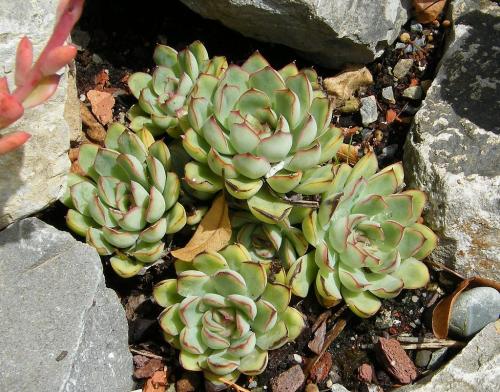
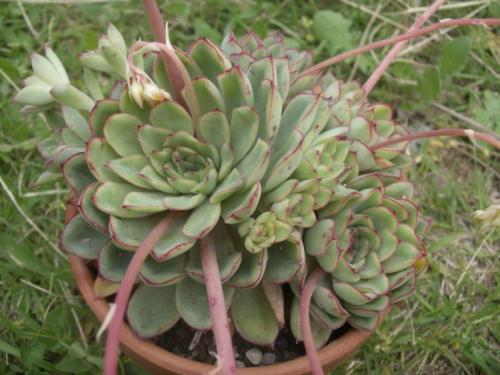
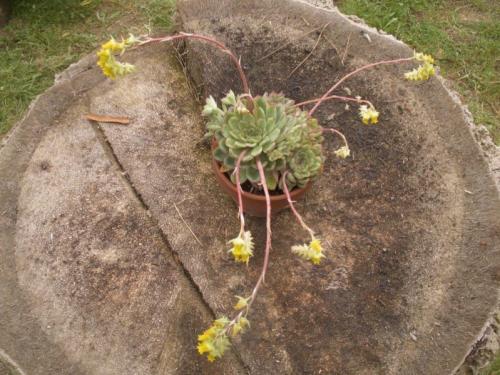
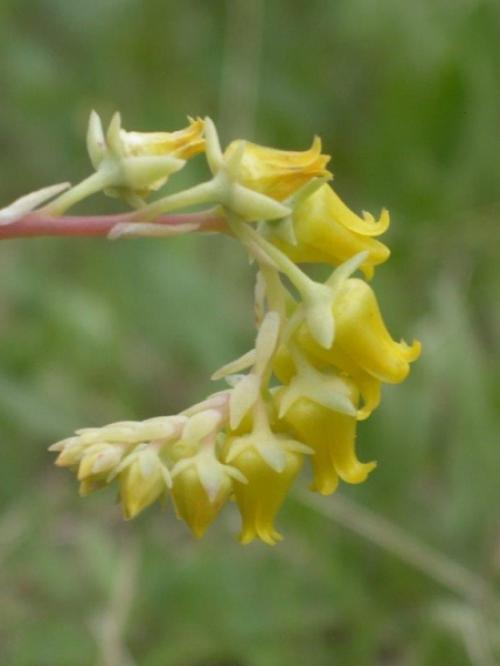
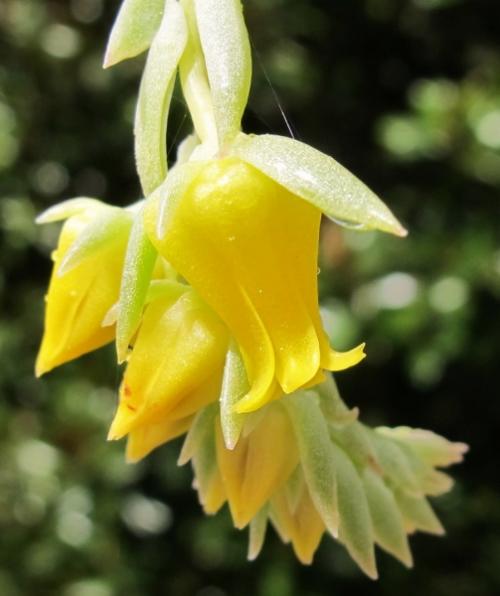
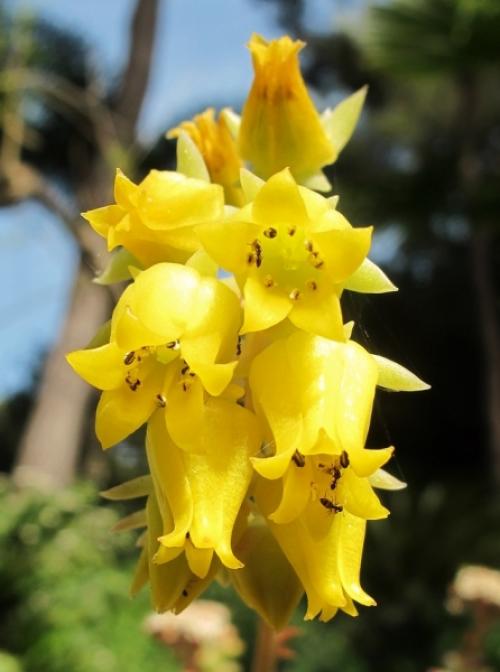
A variegated form :
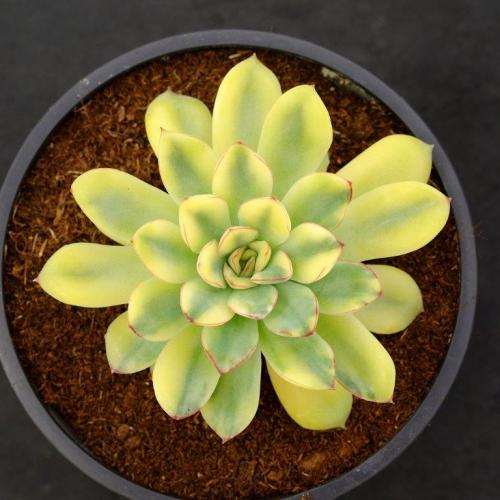
Photo Leo Gonzalez